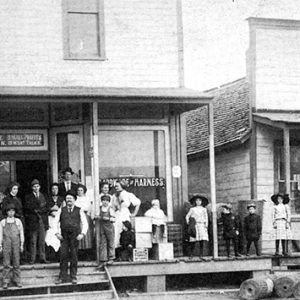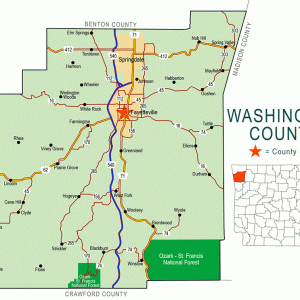calsfoundation@cals.org
Greenland (Washington County)
| Latitude and Longitude: | 35º59’39″N 094º10’31″W |
| Elevation: | 1,250 feet |
| Area: | 4.01 square miles (2020 Census) |
| Population: | 1,213 (2020 Census) |
| Incorporation Date: | March 14, 1910 |
Historical Population as per the U.S. Census:
|
1810 |
1820 |
1830 |
1840 |
1850 |
1860 |
1870 |
1880 |
1890 |
1900 |
|
– |
– |
– |
– |
– |
– |
– |
– |
– |
– |
|
1910 |
1920 |
1930 |
1940 |
1950 |
1960 |
1970 |
1980 |
1990 |
2000 |
|
108 |
147 |
127 |
114 |
164 |
127 |
650 |
622 |
757 |
907 |
|
2010 |
2020 |
|
|
|
|
|
|
|
|
|
1,259 |
1,213 |
|
|
|
|
|
|
|
|
Greenland is a second-class city in Washington County adjacent to Drake Field, a small airport that serves the Fayetteville (Washington County) area. Situated on U.S. Highway 71 and crossed by Interstate 49, Greenland is largely a residential community tied closely to the Fayetteville economy.
The land on which Greenland stands was once hunting ground for the Osage, who traveled from Missouri to hunt. The same land was claimed at one time by Lovely County and was offered by the U.S. government to the Cherokee, who were later moved to Indian Territory (now the state of Oklahoma). The first recognized white landowners in the Greenland region were Sutherland Mayfield (1839), Alexander Scott (1839), and Jacob Yoes (1839). During the Civil War, the land around Fayetteville changed hands several times, and farms were raided by Federal troops, Confederate troops, and bands of guerrillas not affiliated with either side. After the war ended, settlers returned and established a small community that they named Frog Pond.
The St. Louis–San Francisco Railway built a rail line through Fayetteville in 1882. The line passed through Frog Pond, but the railroad named the depot Rugby. A post office of the same name was established that year. Four years later, the name was changed again to Staunton. In 1909, shortly before the city incorporated, the name Greenland Station was selected. No reason for the various selected names has been published.
The fruit industry provided most of the jobs for Greenland residents. Johnson Pear Farm and Cook Orchard were two of the larger businesses based in Greenland. Cash crops in the early twentieth century included apples, pears, strawberries, raspberries, and blackberries. Most area farms also raised chickens and livestock, and grew vegetables. Parker Brothers Nursery provided trees for the orchards. There were two grocery stores in Greenland: Jacob Yoes’s store and Marion Bruce Crider’s store. According to local lore, when a Republican president was in the White House, Yoes was appointed postmaster and ran the post office from his store, but when a Democrat was elected, Crider was appointed postmaster and ran the post office from his store. The city also had a Baptist church, a blacksmith, a soda shop, and a public school. A new school building, built from stone, opened in 1922. A gymnasium was added in 1940, built with money contributed by local dentist George Washington Wilson (known as Doc Wilson) and his wife, Alberta Caldwell Wilson. Drake Airfield was built in 1929.
Smaller schools were consolidated into the Greenland school district during the Great Depression. The school system remains active in 2013, with almost 800 students from kindergarten through high school. The school system has three buildings: an elementary school, a middle school, and a high school. Most of the businesses along Highway 71 report Fayetteville addresses. The population of Greenland was 1,259 in 2010. An artificial lake, Adams Lake, lies west of the city, but it is not accessible to the public for fishing or boating.
For additional information:
Campbell, Denele. “Greenland, 1925–1935.” Flashback 56 (Winter 2006): 31–35.
City of Greenland, Arkansas. http://www.greenland-ar.com/ (accessed June 4, 2022).
History of Washington County, Arkansas. Springdale, AR: Shiloh Museum, 1989.
Steven Teske
Butler Center for Arkansas Studies
 Greenland Store
Greenland Store  Washington County Map
Washington County Map 



Doctor George Washington Wilson and his wife, Alberta Caldwell Wilson, generously donated money and had the gym built. I am the daughter of Marion Bruce Crider (sheriff, then county judge) and Margie Richardson Crider. After Doc Wilson died, Mrs. Wilson spent her time with my family, spending holidays at the jail and later at my parents’ home in Greenland, which was across from her house.